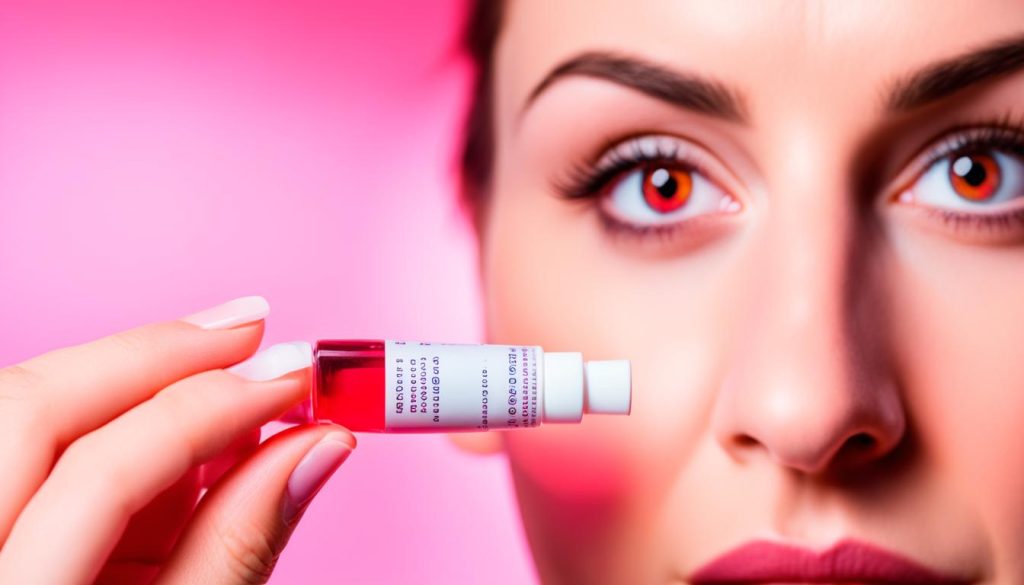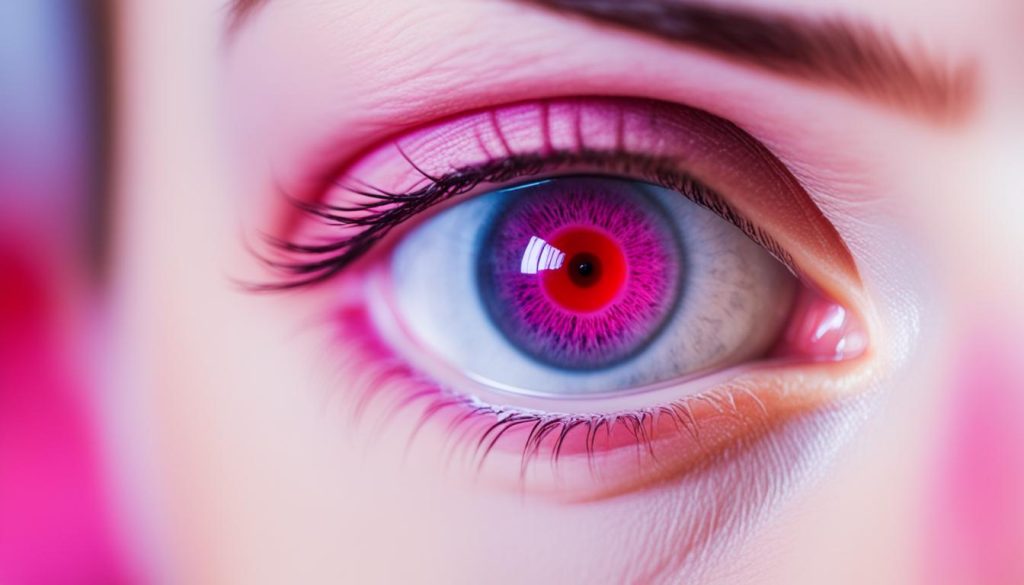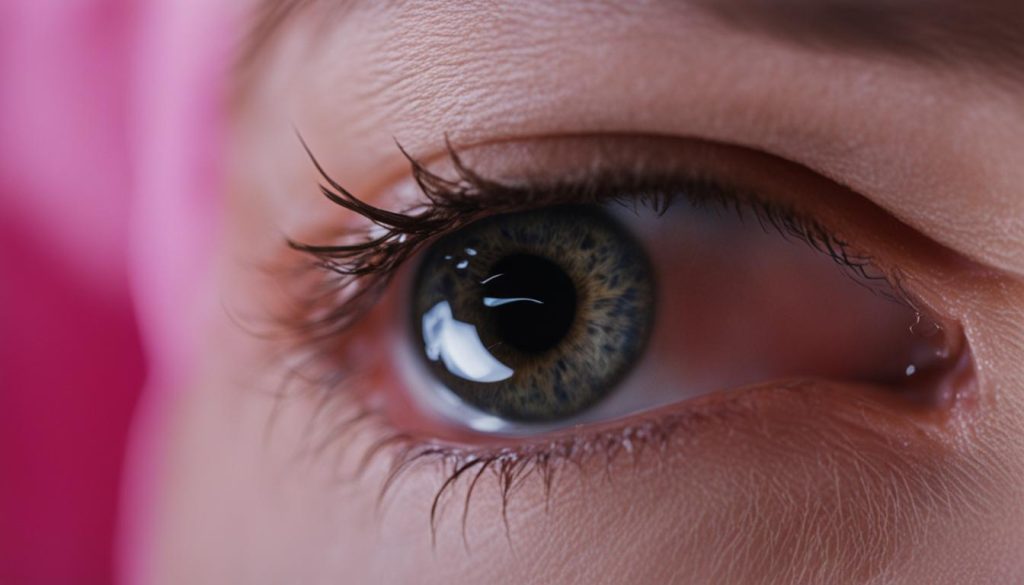Pink eye, also known as conjunctivitis, is a common eye condition that can cause discomfort and irritation. If you or someone you know is dealing with pink eye, you may be wondering how long it takes for the symptoms to go away and when you can expect relief.
The recovery time for pink eye can vary depending on the type of conjunctivitis and individual factors. In most cases, viral conjunctivitis, which is the most common type, usually resolves on its own within 7 to 14 days. However, it is important to note that in some cases, it can take up to 2 to 3 weeks or more for the symptoms to completely disappear.
On the other hand, bacterial conjunctivitis may improve within 2 to 5 days without treatment, but it can take up to 2 weeks to fully resolve. Allergic conjunctivitis, which is caused by allergens, typically improves when the allergen is removed from the environment but may require medication for relief.
It is important to keep in mind that the duration of pink eye can vary from person to person. If you are experiencing persistent or worsening symptoms, it’s best to consult a healthcare provider for an accurate prognosis and treatment plan.
How Long Does It Take for Pink Eye to Go Away?
Treatment Options for Pink Eye
Pink eye, also known as conjunctivitis, can cause discomfort and irritation. The treatment for pink eye depends on the underlying cause, whether it is viral, bacterial, or allergic in nature. Understanding the different treatment options can help you find relief and get rid of pink eye fast.
- Viral Pink Eye: Viral pink eye is caused by a viral infection and usually resolves on its own within 7 to 14 days. There is no specific treatment for viral pink eye as antibiotics do not work against viruses. However, you can use home remedies to alleviate symptoms and promote healing. Warm compresses can help reduce inflammation and soothe the eyes. Over-the-counter lubricating eye drops can also provide relief from dryness and discomfort. It is important to practice good hygiene by frequently washing your hands and avoiding touching your eyes to prevent the spread of the infection.
- Bacterial Pink Eye: Bacterial pink eye is caused by bacteria and may require antibiotic treatment. Antibiotics can help reduce the duration and spread of the infection. They can be administered as eye drops or ointment. If you have bacterial pink eye, it is important to follow your healthcare provider’s instructions regarding the use of antibiotics. Complete the full course of antibiotics as prescribed to ensure effective recovery and prevent the recurrence of the infection.
- Allergic Pink Eye: Allergic pink eye is caused by allergens such as pollen, pet dander, or dust mites. The best approach to managing allergic pink eye is to identify and remove the allergen from your environment. Over-the-counter antihistamine eye drops or oral antihistamines can provide relief from symptoms such as itching, redness, and watering of the eyes. If symptoms persist or worsen, consult a healthcare provider for further evaluation and prescription-strength medications, such as prescription eye drops or mast cell stabilizers.
When treating pink eye, it is important to consult a healthcare provider for an accurate diagnosis and treatment plan. They can provide specific recommendations based on your symptoms, the severity of your condition, and your medical history. Follow the prescribed treatment plan and practice good hygiene to prevent the spread of pink eye to others.
To summarize:
| Pink Eye Type | Treatment Options |
|---|---|
| Viral Pink Eye | Home remedies (warm compresses, lubricating eye drops) |
| Bacterial Pink Eye | Antibiotics (eye drops, ointment) |
| Allergic Pink Eye | Allergen removal, over-the-counter antihistamine eye drops or oral antihistamines |
It is crucial to seek medical advice if your symptoms persist or worsen. A healthcare provider can provide guidance and ensure the most appropriate treatment for your condition.

When to Seek Medical Care for Pink Eye
Pink eye, or conjunctivitis, is a common eye condition that can usually be managed at home. However, there are certain situations where seeking medical care is important to ensure proper diagnosis and treatment. It is essential to be aware of the symptoms that may indicate the need for medical attention.
If you or your child experience severe symptoms such as:
- Intense redness
- Eye pain
- Blurred vision
- Sensitivity to light
It is recommended to see a healthcare provider. These symptoms can be signs of a more serious condition or complications that require medical intervention.
For newborns with pink eye symptoms, it is crucial to seek immediate medical attention. Newborns have delicate immune systems and are more vulnerable to infections.
Individuals with a weakened immune system, such as those with HIV/AIDS or undergoing chemotherapy, should also consult a doctor if they develop pink eye symptoms. Their compromised immune system may put them at higher risk for complications.
If you or your child’s pink eye is caused by bacteria and doesn’t show improvement within 24 hours of using antibiotics, it is advisable to seek medical care. Persistent or worsening symptoms despite antibiotic treatment may indicate the need for a different type of medication or further evaluation.
Remember, it is always better to err on the side of caution and consult a healthcare professional when in doubt. They can provide a proper diagnosis and recommend the appropriate treatment plan to help alleviate symptoms and promote a faster recovery.
| Symptoms | When to Seek Medical Care |
|---|---|
| Intense redness | Eye pain |
| Blurred vision | Sensitivity to light |
| Newborns with pink eye symptoms | Individuals with a weakened immune system |
| Persistent or worsening symptoms despite antibiotic use |
Contagiousness of Pink Eye
Pink eye, also known as conjunctivitis, is a highly contagious condition, particularly in cases of viral or bacterial conjunctivitis. Understanding the contagious nature of pink eye is crucial in preventing its spread and minimizing the risk of infection.
The Contagious Period:
During a pink eye infection, the contagiousness can vary depending on the type of conjunctivitis. Viral pink eye, the most common form, is typically contagious for approximately 10 to 14 days. However, it’s important to note that the contagious period may extend even after the symptoms have resolved.

Bacterial pink eye, which is often accompanied by pus-like discharge, can also be highly contagious. The contagious period for bacterial conjunctivitis can last until 24 to 48 hours after starting antibiotic treatment.
Methods of Transmission:
Pink eye can be transmitted through various modes of contact, both direct and indirect. Direct contact occurs when you come into contact with the eye secretions or discharge of an infected individual. This can happen through actions like shaking hands or sharing personal items, such as towels, pillows, or cosmetics.
Indirect contact refers to touching surfaces that have been contaminated by the virus or bacteria and then touching your own eyes. These contaminated surfaces can include doorknobs, countertops, or shared objects like eyeglasses or contact lenses.
Preventing Contagion:
To prevent the spread of pink eye, it is essential to practice good hygiene and take specific precautions:
- Wash your hands frequently and thoroughly with soap and water for at least 20 seconds, especially before and after touching your eyes.
- Avoid touching or rubbing your eyes, as this can introduce bacteria or viruses.
- Avoid sharing personal items, such as towels, pillowcases, or eye makeup.
- Clean and disinfect frequently touched surfaces regularly.
- Follow your healthcare provider’s instructions and complete the prescribed treatment to reduce the contagious period.
Returning to Work or School
If you or your child has pink eye, it’s important to refrain from close contact with others until the symptoms subside and the contagious period has passed. You should follow the guidance provided by your healthcare provider regarding when it is safe to return to work, school, or other public settings.
Pink Eye in Children
Pink eye, also known as conjunctivitis, is a common condition that affects children, especially those in daycare or school settings. This is because contagious infections can easily spread among children in close contact with each other. When it comes to pink eye in children, it’s important for parents and caregivers to be vigilant about hand hygiene and teach children proper hygiene practices to prevent the spread of the infection.
One of the key factors that make children more prone to pink eye is their increased susceptibility to viral conjunctivitis, which is highly contagious. Viral conjunctivitis is commonly caused by adenoviruses and can easily spread from one child to another through direct or indirect contact.
To minimize the risk of pink eye in children and prevent its spread, here are some important measures to follow:
- Encourage children to practice good hand hygiene, including regular handwashing with soap and water for at least 20 seconds.
- Teach children to avoid touching their eyes, as this can introduce bacteria or viruses into the eyes.
- Instruct children to use tissues or their elbows to cover their mouths and noses when coughing or sneezing.
- Remind children not to share personal items such as towels, washcloths, or eye makeup to prevent cross-contamination.
- Keep children who show symptoms of pink eye at home and seek medical care if necessary. It’s important to consult a healthcare professional for an accurate diagnosis and appropriate treatment.
By following these preventive measures and seeking timely medical care, parents can help reduce the impact of pink eye on their children’s health and well-being.

Symptoms of Pink Eye in Children
| Common Symptoms | Allergic Pink Eye | Viral Pink Eye | Bacterial Pink Eye |
|---|---|---|---|
| Redness and irritation | ✓ | ✓ | ✓ |
| Watery or tearing eyes | ✓ | ✓ | ✓ |
| Swelling of the eyelids | ✓ | ✓ | ✓ |
| Gritty or sandy sensation | ✓ | ✓ | ✓ |
| Yellow or green discharge | ✓ | ✓ | |
| Itching | ✓ | ||
| Crusting of eyelashes | ✓ |
Pink Eye Prevention and Home Remedies
Preventing pink eye is crucial in maintaining good eye health. By following a few simple preventive measures, you can significantly reduce your risk of contracting this common and contagious eye condition.
Practicing Good Hygiene
One of the most effective ways to prevent pink eye is by practicing good hygiene. Make it a habit to wash your hands frequently with soap and water, especially before touching your eyes or applying any eye drops or ointments. Avoid touching your eyes with unwashed hands to minimize the risk of introducing bacteria or viruses into your eyes.
Additionally, avoid sharing personal items such as towels, pillowcases, and makeup brushes, as these may carry germs that can cause pink eye.
Clean Eyeglasses, Contact Lenses, and Cosmetic Brushes
If you wear eyeglasses or contact lenses, it’s essential to keep them clean to prevent the accumulation of harmful bacteria and viruses. Follow the cleaning instructions provided by your eye care professional and ensure that you clean and disinfect your lenses or glasses regularly.
If you use cosmetic brushes or eye makeup, make sure to clean them frequently using mild soap and water. This will help prevent the buildup of bacteria that can cause infection, including pink eye.
Home Remedies for Pink Eye Relief
If you do develop pink eye, there are several home remedies that can help alleviate symptoms and promote faster recovery.
1. Warm or Cool Compresses: Apply a warm or cool compress to your closed eyelids for 10 to 15 minutes a few times a day. This can help reduce swelling and redness associated with pink eye.
2. Proper Eye Hygiene: Gently clean your eyelids and lashes using a clean, damp cloth or cotton pad. This can remove any discharge and debris, reducing further irritation and preventing the spread of infection.
3. Over-the-Counter Eye Drops or Medications: Over-the-counter eye drops or medications specifically designed for pink eye can provide relief from symptoms such as itching and redness. Follow the instructions on the packaging and consult with a healthcare provider if needed.

While home remedies can offer temporary relief, it’s essential to consult a healthcare provider for a proper diagnosis and advice on the best course of treatment for your specific case. They can provide guidance on appropriate over-the-counter medications or prescribe medications, if necessary, to ensure a speedy recovery.
Conclusion
Pink eye, also known as conjunctivitis, is a common condition that can cause discomfort and inconvenience. The recovery period for pink eye varies depending on the type of conjunctivitis and individual factors. In cases of viral conjunctivitis, which is the most common type, the pink eye recovery period can range from 7 to 14 days. Bacterial conjunctivitis may require antibiotic treatment for 2 to 5 days or longer. Allergic conjunctivitis, caused by allergens, can be managed by removing the allergen and using appropriate medications.
To ensure a speedy recovery, it is important to follow proper hygiene practices, such as frequent handwashing and avoiding touching the eyes. If you or your child experiences severe symptoms or if the pink eye symptoms persist or worsen, it is advisable to consult a healthcare provider for further evaluation and guidance. Completing the prescribed treatments, such as finishing the full course of antibiotics if necessary, is essential in promoting effective pink eye recovery.
Remember, the duration of pink eye can vary from person to person, so it is always best to seek medical care for an accurate prognosis. Taking proactive measures and following healthcare advice will help alleviate symptoms and reduce the risk of spreading pink eye to others. With proper care and attention, most cases of pink eye can be successfully managed, allowing for a full recovery and a swift return to normal daily activities.




